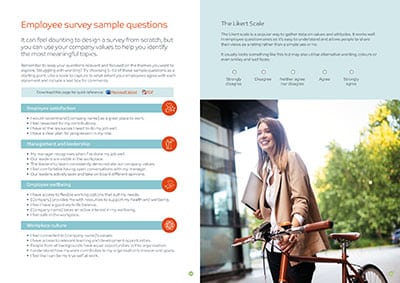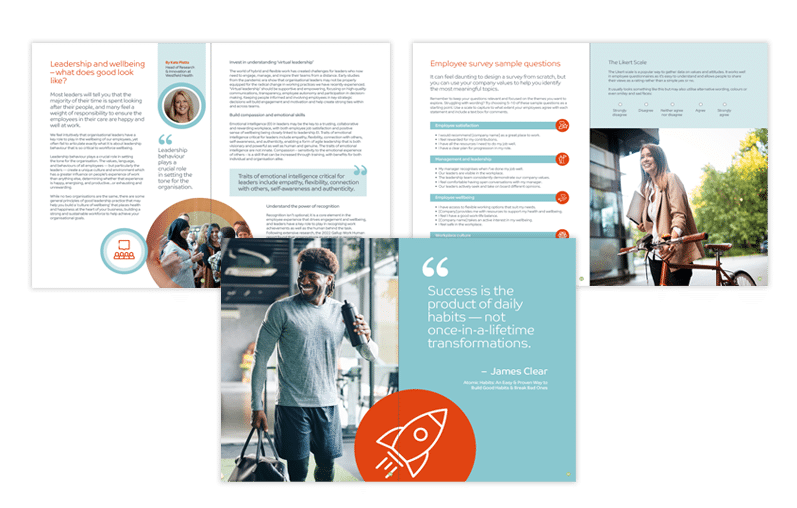Starting or expanding your employee wellbeing strategy can be daunting, especially if you’re not sure exactly where to focus your efforts. It’s important that your investment in wellbeing is targeted to the specific needs of your employees, so they feel supported and empowered to make positive changes in their lives.
Collecting regular, honest feedback is a vital first step, but with organisations now likely to be split across different locations — many having office, remote, on-site and field-based workers — it can be difficult to figure out what support your people need.
By gathering feedback before, during and after rolling out a new initiative, you can create a culture of open communication and build a compelling case for further wellbeing investment.
In this blog we share a few ways to improve your feedback channels and encourage your people to share their views. This will ensure wellbeing strategy:
- Reflects what your people are telling you.
- Is flexible to adapt to on-going feedback.
- Aligns with your organisational vision and business objectives.
- Generates return on investment and makes progress against your business targets.
Feedback channels
Empower your people to have their say by using data from a variety of sources. Remember that we all have our preferred communication styles, and you’ll need to make use of multiple channels to create an accurate view of your workforce.
Here are some popular ways to gather feedback and find out where people need support:
- Employee wellbeing surveys
- HR and absence data
- Manager feedback
- Focus groups
- Investors in People assessments
- Pulse surveys
- Informal discussions
- Suggestion boxes
- Push button surveys in the workplace
A quick guide to pulse surveys
Pulse surveys are short, simple questionnaires which provide a regular check-in point for employee engagement, wellbeing and satisfaction rates across the business.
Pulse surveys are a great way to improve communication between colleagues, HR and leadership teams while providing an avenue for employees to give direct feedback on their experiences. They’re ideal for tracking trends and changes in employee sentiment. When designing your pulse survey, remember to:
- Define your goals and build your questions around them.
Each question should serve a purpose and track progress towards a goal. - Keep it lean.
Short, simple surveys will receive more responses and more accurately represent your workforce. Keep it to 5-10 questions per survey. - Repeat questions to track changes.
Include the same questions over a number of weeks or months to spot trends and reactions to changes in the workplace. - Demonstrate transparency.
Sharing the results of your surveys will help build trust and awareness among colleagues and give visibility to the data behind your decisions.
Several online tools exist to help you build your pulse survey. Some popular options include:
Employee survey sample questions
When putting an employee feedback survey together, remember to keep your questions specific and relevant to the topic you’re hoping to explore. Your employees will find it easier to engage with a shorter, more targeted questionnaire.
Struggling with wording? We’ve put together a list of questions, organised by theme, to help you get started.
Download employee survey sample questions as a PDF
Try choosing 5-10 of these sample questions as a starting point. Use a scale to capture to what extent your employees agree with each statement and include a text box for comments.
Find out more about workplace wellbeing
Our Workplace Strategy Workbook is a free resource to help you plan and launch a wellbeing strategy that helps your people build positive habits and feel happier at work.
The Workplace Strategy Workbook: How to drive culture change and help your people build positive habits that stick
From influencing company culture to engaging leaders and business partners, the workbook contains three chapters of guides, ideas and resources to help you create an effective wellbeing programme for your business.

